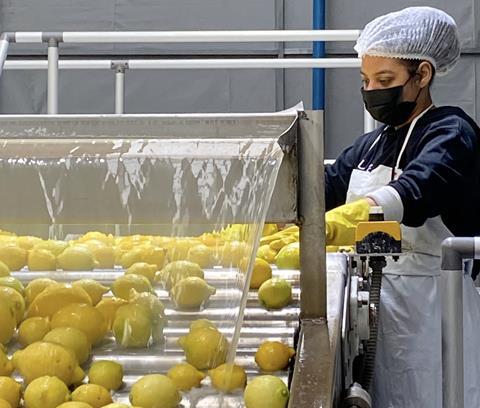Monserrat Valenzuela of the Chilean Citrus Committee, analyses the challenges and opportunities facing the sector

How is the 2024 production season shaping up?
Monserrat Valenzuela: We anticipate an export volume of 383,000 tonnes for 2024, representing a decrease of 4 per cent on last season. Within each category, the outlook varies – clementines and mandarins are set to decrease by 35 per cent and 9 per cent to 40,000 tonnes and 160,000 tonnes respectively; oranges are down 2 per cent at 93,000 tonnes, while lemons are forecast to increase by 33 per cent, reaching 90,000 tonnes.
In the case of, the contraction in volume is due to water restrictions in Region IV, where most of the country’s 4,000ha of production are located.
What is the Chilean sector doing to improve productivity, quality and availability within the citrus sector?
MV: This is a constant challenge and one that lies very much within the parameters of the Citrus Committee. As a sector we must be continually updating and incorporating new technologies that promote productive efficiency and sustainability, thereby maintaining competitiveness in destination markets.
To obtain good results, it is important to identify individual problems or challenges and support and develop research and extension activities that lead to a concrete and useful technological solution for the industry. To achieve this, we must work together with many other organisations such as plant health authorities, universities, research institutes and financial institutions.
Chilean exports are highly concentrated in the North American market. Are you looking for greater market diversification? And do you think there is potential to increase shipments to Europe?
MV: It is always important for an industry to diversify its markets and thus not be affected by the same factors and economic cycles, reducing the risk of depending on a mono-market.
Historically, the US has been the main destination market for Chilean citrus, without major variations by season. In 2023, the US accounted for 88 per cent of our shipment volume, Asia for 6 per cent and Europe for just 2 per cent, and we expect a similar situation this season.
When it comes to Europe, lemons and mandarins make up the bulk of our exports. Chile has the phytosanitary conditions, shape, colour and size profile to compete in the European market.
What is the general trend in Chile with regard to planted area? Is it true that citrus acreage is decreasing each year due to drought?
MV: Citrus plantations are distributed between Atacama Region in the north and O’Higgins Region. According to the CIREN, in 2021 there were 25,604ha of registered production and this this had risen to 27,813ha last year. The Metropolitan Region has the largest planted area, with 8,361ha. By species, lemon leads the way nationwide with 9,199ha, followed by mandarins with 7,800ha, and oranges with 6,600ha.
What would you say are the biggest challenges facing the sector today?
MV: Since the 1990s, the citrus industry has experienced very significant growth, both in terms of planted area – particularly in mandarins – and yield, thanks to a transformation in orchard management. We are building an industry better adapted to climate change, with a strategy aimed at facing new productive challenges and becoming more. If we are to compete in international markets with citrus from other origins we must maintain the quality and consistency of our offer.
The biggest challenges we face as an industry today is to increase productive efficiency to confront the increase in labour, input and freight costs. Water scarcity is another big problem, especially in Region IV, one of the main citrus production areas. And, of course, we must address all of these challenges while making our industry more sustainable.
Juan Enrique Ortúzar, president of the Citrus Committee, said recently that if there are growth opportunities for the citrus industry, “they should be very well directed.” What varieties, production regions and seasons of the campaign should the sector be focusing on?
MV: What he meant is that it’s not as simple as deciding what to grow because the market is well supplied from different origins. But in easy peelers, there is a window in Chile between Clementinas and W. Murcott for example. In the early part of the season, before Orogrande is harvested, there is room for a Clementina of comparable good quality.
With regard to regions, as long as the drought continues in Coquimbo, new plantings should focus on the regions of Valparaíso and O’Higgins.



